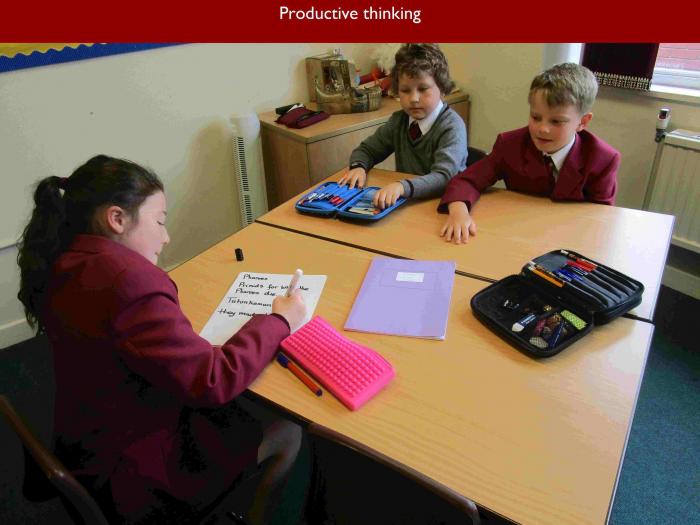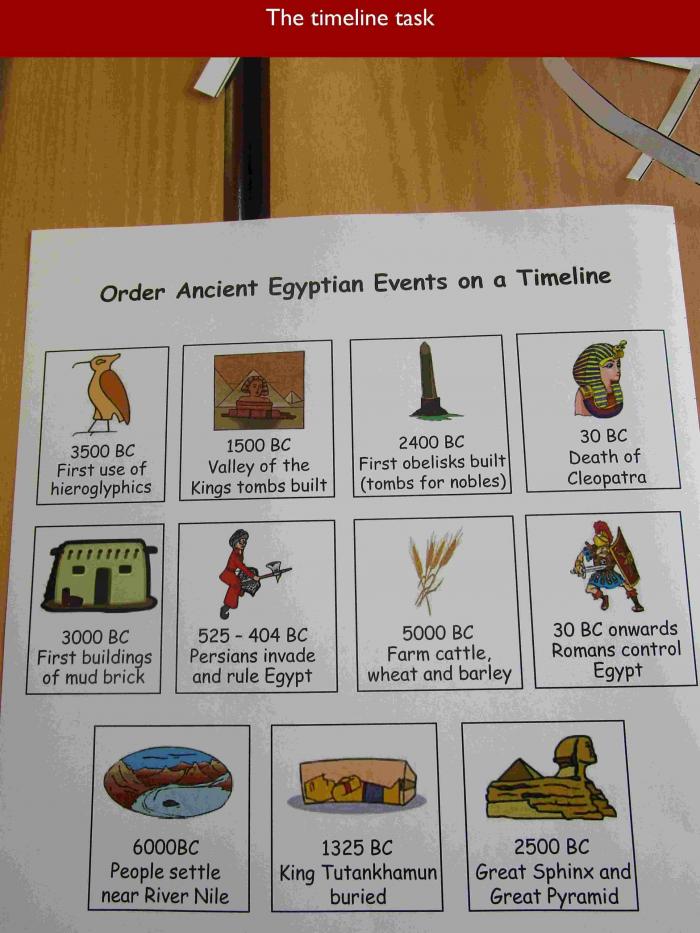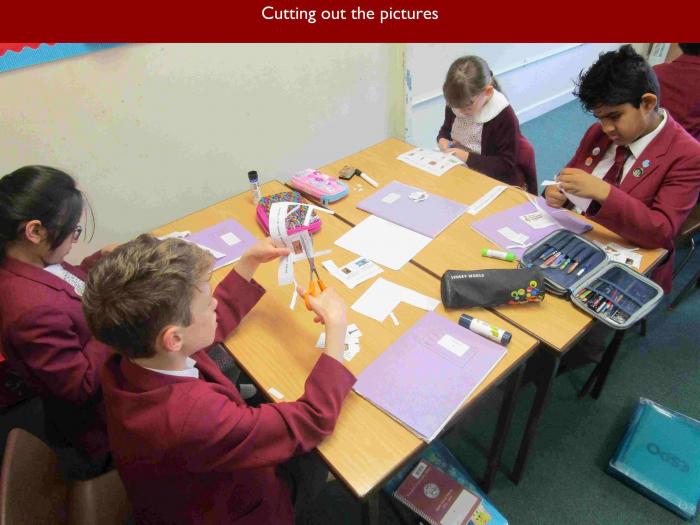











Timeline Travellers
By this time in Form 4, pupils at Eversfield are well versed in the history and culture of ancient civilizations. Although their last topic was the comparatively recent medieval period, in Form 3 we plunged them back through the mists of time all the way to the Greeks and Romans and to Britain from the Stone Age to the Iron Age.
No surprise, then, that Mr Leonard opted to begin this term’s work on Ancient Egypt by asking everyone in 4SS to consider what they already know about the subject. Such an activity helps teachers to pitch the appropriate level of teaching and expectation, and it is useful to know if anyone has been to see the artefacts at the British Museum, or has even been to Egypt. The children soon had lots of ideas recorded, which Mr Leonard brought together in what he described as a spider diagram. Being familiar with the basic anatomy of a spider, I was initially quite alarmed by the appearance of this diagram, but it turns out there is no need to worry. A quick check on the internet confirmed that, unlike with the arachnid itself, there is no requirement for a spider diagram to have eight legs!
To familiarise the class with the key events in Ancient Egypt, the next task was to order the events in the timeline. Any concerns that Mr Leonard had that the children would find the concept of BC dates confusing was quickly dispelled, as this was something they encountered several times in Form 3. However, the timeline itself produced some interesting questions. Michael was keen to know whether Tutankhamun was a good or bad leader, whilst Erran observed that there were two key events for 30BC. Presumably they were linked in some way, but which came first? Tomas was excited to discover that the first brick buildings were made as long ago as 3000BC. Mr Leonard explained that, unlike bricks in this country, these bricks were made from mud placed in moulds and left to dry in the sun, adding that this technique, known as adobe, is still used today in certain parts of the world. The mosque at Djenné in Mali is a famous example of such a building, although it is nowhere near as old as the first buildings in Egypt.
Roman was extremely impressed to learn that such a civilization as Ancient Egypt could have developed so many thousands of years ago. This led Mr Leonard to ask what the class thought might have been going on simultaneously elsewhere in the world. Henry perceptively suggested that the Trojans and Persians were likely to have been contemporaneous, whilst Maryam thought that some of the dates matched the Stone Age in Britain, and this is also true. Stonehenge and the Pyramids were constructed at broadly the same time.
One thing a historian learns very quickly is that every event has a cause, so why did such a powerful civilization spring up in Egypt and not elsewhere in Africa? Noah thought it might have something to do with the people being clever enough to read hieroglyphics and follow instructions, and there is undoubtedly some truth and logic in this view. The key reason, however, as Henry identified, was the proximity of the River Nile, enabling the Egyptians to trade and to resource their growing empire.
Finally, Mr Leonard asked the children to make a subjective comparison of the ancient civilizations they have studied and suggest which was the most sophisticated. James pointed immediately to the magnificent buildings left by the Romans, whilst India felt that the huge scale of the empire they established was enough in itself to prove their superiority. Others remarked upon the technical ingenuity of the Romans, with their water supply systems and hypocaust central heating. Christos, predictably, opted for the Greeks on the grounds that they produced great thinkers. Daniel agreed, mentioning clever scientists such as Archimedes and Aristotle. Noah took a different view, suggesting that the Vikings were the most sophisticated because of their trading power and their ability to navigate the globe.
An interesting debate could be had on the relationship between power and sophistication in determining the fate of a civilization, and no doubt that is something Mr Leonard will pursue in another lesson. Next on the agenda for 4SS, however, is the chance to turn detective and discover what information about the Ancient Egyptians can be gleaned by a study of the artefacts they left behind.